THE
REVOLUTION OF ELECTRONICS
WITHIN MUSIC
Chapter 3:
THE SEVENTIES: THE ELECTRONIC REVOLUTION IN MOTION (First Part:
1970-75)
By: Jorge Munnshe
Kraftwerk
was formed in 1970. Its founders, Ralf Hutter
and Florian Schneider, had met two years before,
while studying Classical Music at the
conservatoire in Dusseldorf. The band would include at one time
or other such artists as Klaus Dinger and Michael
Rother (who were to found Neu), Karl
Bartos, Wolfgang Flur, and others.
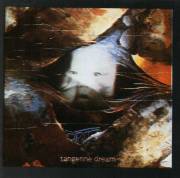 The concept of Kraftwerk, as
well as the essence of Techno music, are born
from an urban or industrial vision of the world surrounding us, a
vision made possible merely from the technological explosion that
followed World War Two, with the spectacular industrial
development, the highways, the skyscrapers, the hosehold electric
appliances, the technology becoming an intimate part of everyday
life in the big cities. Techno has been defined
as the Folk Music of the urban settlements,
perhaps because the lifestyles in two big cities on different
points in the world are more similar to one another than to those
of the rural areas in their same region.
The concept of Kraftwerk, as
well as the essence of Techno music, are born
from an urban or industrial vision of the world surrounding us, a
vision made possible merely from the technological explosion that
followed World War Two, with the spectacular industrial
development, the highways, the skyscrapers, the hosehold electric
appliances, the technology becoming an intimate part of everyday
life in the big cities. Techno has been defined
as the Folk Music of the urban settlements,
perhaps because the lifestyles in two big cities on different
points in the world are more similar to one another than to those
of the rural areas in their same region.
At an instrumental level, Kraftwerk
kept away from the standard synthesizers that appeared in those
times coming from such firms as Moog, EMS, or ARP,
and chose to use their own equipment. This was rather rudimentary
at the beginning: home-made oscillators, altered electronic
organs, all kinds of metallic planks to be used for percussion,
and tape to manipulate the recordings. Within a few years, their
studio would become an elite laboratory, supplied with prototypes
of new models developed by different firms, and customized
devices.
The electronic music scene harvested an
important technological success with the sophisticated soundtrack
of the movie The Andromeda Strain, composed by Gil
Melle, as well as an artistic one, since this is music
indeed, not mere noises of a more or less complex nature like it
happens with other soundtracks of those times.
Tangerine Dream
release their album Alpha Centauri, whose name is a
clear indication of the impact that the coming of age of the
Space Age had on the musical panorama and the industrialized
society in general. In the album a VCS-3 is used, besides the
electronic organs. This is the first album where the listener can
clearly appreciate the unmistakable style of Tangerine
Dream, and it can be considered as the true recording
beginning of the band. In that moment, TD is
formed by Edgar Froese, Christopher Franke
(drummer coming from Jazz and a former member of
the band Agitation Free) and Steve
Schroyder. Conrad Schnitzler has left TD
to return to Cluster for a short time,
definitely leaving the band to begin his solo career. Klaus
Schulze has also left TD. He founds the
Ashra Tempel band. The first album by them then
appears, as well as the first one by Krafttwerk.
Pink Floyd continue on one of their most cosmic
phases with Meddle.
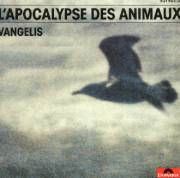 Vangelis is
undergoing a decisive transition stage in his musical career.
After album 666, where he assumes the composition, Aphrodite's
Child split up. Vangelis is somewhat
hesitant as to the path he is to take from then on. He wanders
between France and Great Britain, is about to enter the band Yes,
and makes some experimental works here and there, like the
already mentioned album that reflects the atmosphere of May '68.
Most remarkable is his innovative soundtrack for L'Apocalypse
des Animaux. Some of the compositions are brilliant,
revealing a powerful imagination. The merit is double,
furthermore, as he has based his work on electronic organs
instead of synthesizers.
Vangelis is
undergoing a decisive transition stage in his musical career.
After album 666, where he assumes the composition, Aphrodite's
Child split up. Vangelis is somewhat
hesitant as to the path he is to take from then on. He wanders
between France and Great Britain, is about to enter the band Yes,
and makes some experimental works here and there, like the
already mentioned album that reflects the atmosphere of May '68.
Most remarkable is his innovative soundtrack for L'Apocalypse
des Animaux. Some of the compositions are brilliant,
revealing a powerful imagination. The merit is double,
furthermore, as he has based his work on electronic organs
instead of synthesizers.
Each one of the members of Aphrodite's
Child continues on their own path, but in the case of
the two cousins, Demis Roussos and Vangelis,
these paths will remain close. Roussos is then a
consolidated singer, and he will begin a successful solo career.
For a time, Vangelis will compose songs for his
cousin. This activity, not the private works he carries out in
these years, will be what really will give him money. Thanks to
his cousin's success, Vangelis will have enough
funds to build a studio supplied with the most sophisticated
equipment abundant in synthesizers.
We are in the early seventies. Electronic
music still is seen as related to LSD "trips" and
hallucinations of the Vietnam war veterans. Yet when the
utilization of synthesizers spreads to Rock and
to Pop, this image will gradually fade. Yes,
Genesis, and Jan Hammer, among others,
are already using them.
The most durable formation and perhaps
the most brilliant one of Tangerine Dream is
established in 1972, when Steve Schroyder
abandons the band and Edgar Froese contacts
keyboardist Peter Baumann in the Berlin club
where he performs. He proposes him to join the band, which he
accepts. The first album released with this new configuration is
the legendary Zeit, a dense, dark work.
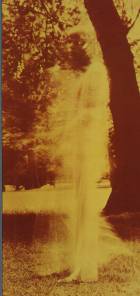 Schulze begins
his solo career with Irrlicht, an impressive electronic
symphony that furthermore has the merit of having been made
basically starting from only one synthesizer Synthi AKS.
Schulze begins
his solo career with Irrlicht, an impressive electronic
symphony that furthermore has the merit of having been made
basically starting from only one synthesizer Synthi AKS.
The second album by Kraftwerk
appears, as well as Schwingungen by Ashra Tempel.
Popol Vuh initiates a fruitful collaboration
with film maker Werner Herzog, which would last
for several years. The movie soundtrack of Aguirre: The Wrath
of God, provides the film with a special dimension, very
much in tune with Herzog's particular style, and
is highly suitable for the movie.
In the USSR, Eduard Artemiev
continues with his innovative musical career, with such works as
the soundtrack for the movie Solaris. Despite the
traditional iron curtain of silence prevailing at the time, in
successive years several artists from Eastern Europe will become
known all over the world, like for instance Polish musician Marek
Bilinsky, Yugoslavian artist Laza Ristovski,
Rainer Oleak from Eastern Germany, and the Hungarians Petr
Hapka, Gabor Pressor and Laszlo Benko.
Synthesizer technology advances
spectacularly in a couple of years. Klaus Schulze
records his second LP, Cyborg, which follows the line of
the first one although it turns out to be more innovative. And Picture
Music, the third one, contains more avantgarde ideas than
the second one, besides revealing an impressive technological
leap forward.
Kraftwerk
present the album Ralf & Florian. Both founder
musicians use now some standard synthesizers. Pink Floyd
abandon the most experimental aspects of their style and enhance
the clearly melodic ones, connecting with a wider audience.
Ashra Tempel
present Join In, in which Klaus Schulze
and also Rosi Mueller participate. The latter
will enter the band, where she will work for several years.
In August 1973, Tangerine Dream
recorded Green Desert. This work would remain
unreleased for more than ten years, until the band decided to
reveal it in a compilation on their first albums. The official LP
of '73 was Atem, which already displayed the definite
consolidation of the Tangerine Dream Sound,
reached with the recording of Phaedra in December this
same year.
Bands that have nothing to do with
electronic music, also get updated and incorporate new
technologies to their work. One of the examples that attract most
attention in this sense is that of the American Rock-Folk
band Creedence Clearwater Revival, who released
some pieces with unusual traits, and even the one called Pendulum,
of a decidedly experimental character.
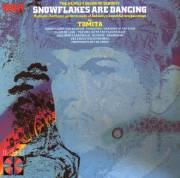 The release of Phaedra in 1974 coincides
with that of the first solo LP of their leader, Edgar
Froese: Aqua, as well as with the international
projection of the band, which reaches the top ten British lists.
The release of Phaedra in 1974 coincides
with that of the first solo LP of their leader, Edgar
Froese: Aqua, as well as with the international
projection of the band, which reaches the top ten British lists.
Klaus Schulze,
who, like TD, transcends frontiers, releases Black
Dance, where he combines baritone and operatic choirs with
the latest synthesizers of the time.
Kraftwerk
also achieve success. Their album Autobahn, a true
ballad to highways, spread Techno in Europe. In it, they sing
through a prototype of vocoder especially build for them.
If Tangerine Dream
popularized the sequencer in the making of most complex rhythms, Kraftwerk
was to be the band who would popularize the vocoder as a device
capable of distorting the human voice up to astonishing limits,
thus achieving these metallic voices that appear to have been
produced by a robot. Curiously enough, the vocoder was not
invented then, since its existence goes back to the thirties, and
it had not been developed for musical applications, but rather as
a voice encoder / decoder for military use, namely to mask
telephone conversations, as a further part of the Intelligence
System of the Allies during World War Two.
The Exorcist, one of
the terror movies with a strongest impact in the history of the
cinema, owes a part of its effect to then ghostly fragment of the
Tubular Bells by Mike Oldfield that
accompany the most mythical sequences of the movie.
In Italy there already are such authors
as Giuliano Sorgini who are pioneers in a kind
of music completely electronic for movie soundtracks of terror
films.
In Japan, Isao Tomita
follows the steps of Walter Carlos and makes
electronic versions of pieces of Classical Music,
using synthesizers instead of the acoustic orchestra.
Electronic music spreads at a great
speed, and its acceptance in the audience increases, especially
among the young. A proof of that is the clear success that Super
Sound Single by Conrad Schnitzler harvests
in the mid seventies in the European discos, which predicts a
brilliant future for electronics within the most popular styles.
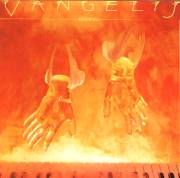 Klaus Schulze,
only four years after the beginning of his solo career, appears
as one of the modern composers who influence the new electronic
artists most.
Klaus Schulze,
only four years after the beginning of his solo career, appears
as one of the modern composers who influence the new electronic
artists most.
Tangerine Dream
release their marvellous Rubycon, where Chris
Franke takes a relevant role in the composition. The
band engage on a successful European tour, during which they
shape an album considered to be by many people one of the pillars
of the new electronic music: Ricochet. The album is a
display of rhythmic complexity never heard before then. Franke,
in charge of the sequencers and rhythm computers, achieves an
outstanding result. Ricochet is such a spectacular
music, so deeply immersed in the electronic universe, that it
will succeed in awakening the enthusiasm of new generations of
listeners in the following decades. Furthermore, Edgar
Froese releases Epsilon in the Malaysian Pale,
a complex, innovative work. The leader of TD has
reached so much success that, with only two albums released,
already a compilation of his is commercialized, under the name of
Electronic Dreams.
Vangelis
signs a contract with RCA that will allow him to
compose his works with the sufficient economic security as to be
able to exclusively concentrate on their production. On the other
hand, the money earned with the songs for Demis Roussos
allows him to create his own studio. To do that, Vangelis
chooses an old house in London that will become the famous Nemo
Studios, the artisan forge where Vangelis
will shape some of his best works. Once again, the thematic
inspiration comes to him from the epic dramatic quality of the
biblical themes. Thus, his first album for RCA
will be titled Heaven and Hell. With the studio half set
up and the building workers working, Vangelis
uses his electronic arsenal for the first time, recording what
will be one of the masterpieces of the new electronic music. In Heaven
and Hell we attend an epic concert where electronics acquire
warm, sentimental and mystic aspects. This is an album with
violent, aggressive themes, and also with others of a romantic
nature, that include a female soloist voice and choirs. The
fusion of voice, percussion and synthesizers is perfect; rather
than a fusion, this is a unique, inseparable Whole. Perhaps the
greatest merit, and maybe also the main trait that separates this
musician from the cosmic wave coming from Germany is the tangible
proof that he gives in this album that electronic music does not
have to sound cool, sinister, robotic, but rather that its
expressive possibilities can equal if not surpass those of the
acoustic orchestra, the paradigm of the performing perfection.
(Next chapter: 1976-79)
 Previous Page (Articles/News)
Previous Page (Articles/News)
 The concept of Kraftwerk, as
well as the essence of Techno music, are born
from an urban or industrial vision of the world surrounding us, a
vision made possible merely from the technological explosion that
followed World War Two, with the spectacular industrial
development, the highways, the skyscrapers, the hosehold electric
appliances, the technology becoming an intimate part of everyday
life in the big cities. Techno has been defined
as the Folk Music of the urban settlements,
perhaps because the lifestyles in two big cities on different
points in the world are more similar to one another than to those
of the rural areas in their same region.
The concept of Kraftwerk, as
well as the essence of Techno music, are born
from an urban or industrial vision of the world surrounding us, a
vision made possible merely from the technological explosion that
followed World War Two, with the spectacular industrial
development, the highways, the skyscrapers, the hosehold electric
appliances, the technology becoming an intimate part of everyday
life in the big cities. Techno has been defined
as the Folk Music of the urban settlements,
perhaps because the lifestyles in two big cities on different
points in the world are more similar to one another than to those
of the rural areas in their same region. Vangelis is
undergoing a decisive transition stage in his musical career.
After album 666, where he assumes the composition, Aphrodite's
Child split up. Vangelis is somewhat
hesitant as to the path he is to take from then on. He wanders
between France and Great Britain, is about to enter the band Yes,
and makes some experimental works here and there, like the
already mentioned album that reflects the atmosphere of May '68.
Most remarkable is his innovative soundtrack for L'Apocalypse
des Animaux. Some of the compositions are brilliant,
revealing a powerful imagination. The merit is double,
furthermore, as he has based his work on electronic organs
instead of synthesizers.
Vangelis is
undergoing a decisive transition stage in his musical career.
After album 666, where he assumes the composition, Aphrodite's
Child split up. Vangelis is somewhat
hesitant as to the path he is to take from then on. He wanders
between France and Great Britain, is about to enter the band Yes,
and makes some experimental works here and there, like the
already mentioned album that reflects the atmosphere of May '68.
Most remarkable is his innovative soundtrack for L'Apocalypse
des Animaux. Some of the compositions are brilliant,
revealing a powerful imagination. The merit is double,
furthermore, as he has based his work on electronic organs
instead of synthesizers. Schulze begins
his solo career with Irrlicht, an impressive electronic
symphony that furthermore has the merit of having been made
basically starting from only one synthesizer Synthi AKS.
Schulze begins
his solo career with Irrlicht, an impressive electronic
symphony that furthermore has the merit of having been made
basically starting from only one synthesizer Synthi AKS. The release of Phaedra in 1974 coincides
with that of the first solo LP of their leader, Edgar
Froese: Aqua, as well as with the international
projection of the band, which reaches the top ten British lists.
The release of Phaedra in 1974 coincides
with that of the first solo LP of their leader, Edgar
Froese: Aqua, as well as with the international
projection of the band, which reaches the top ten British lists. Klaus Schulze,
only four years after the beginning of his solo career, appears
as one of the modern composers who influence the new electronic
artists most.
Klaus Schulze,
only four years after the beginning of his solo career, appears
as one of the modern composers who influence the new electronic
artists most.